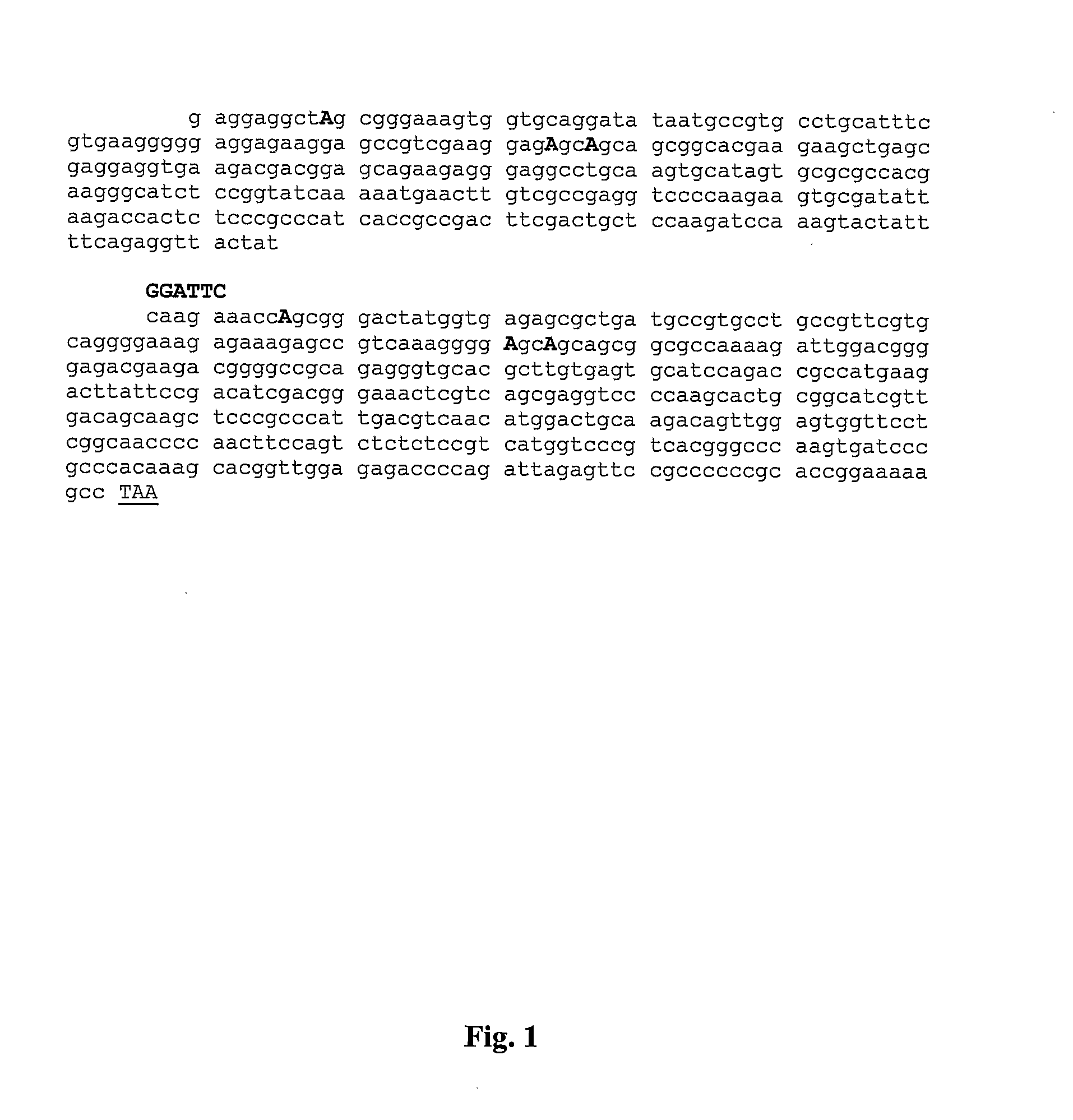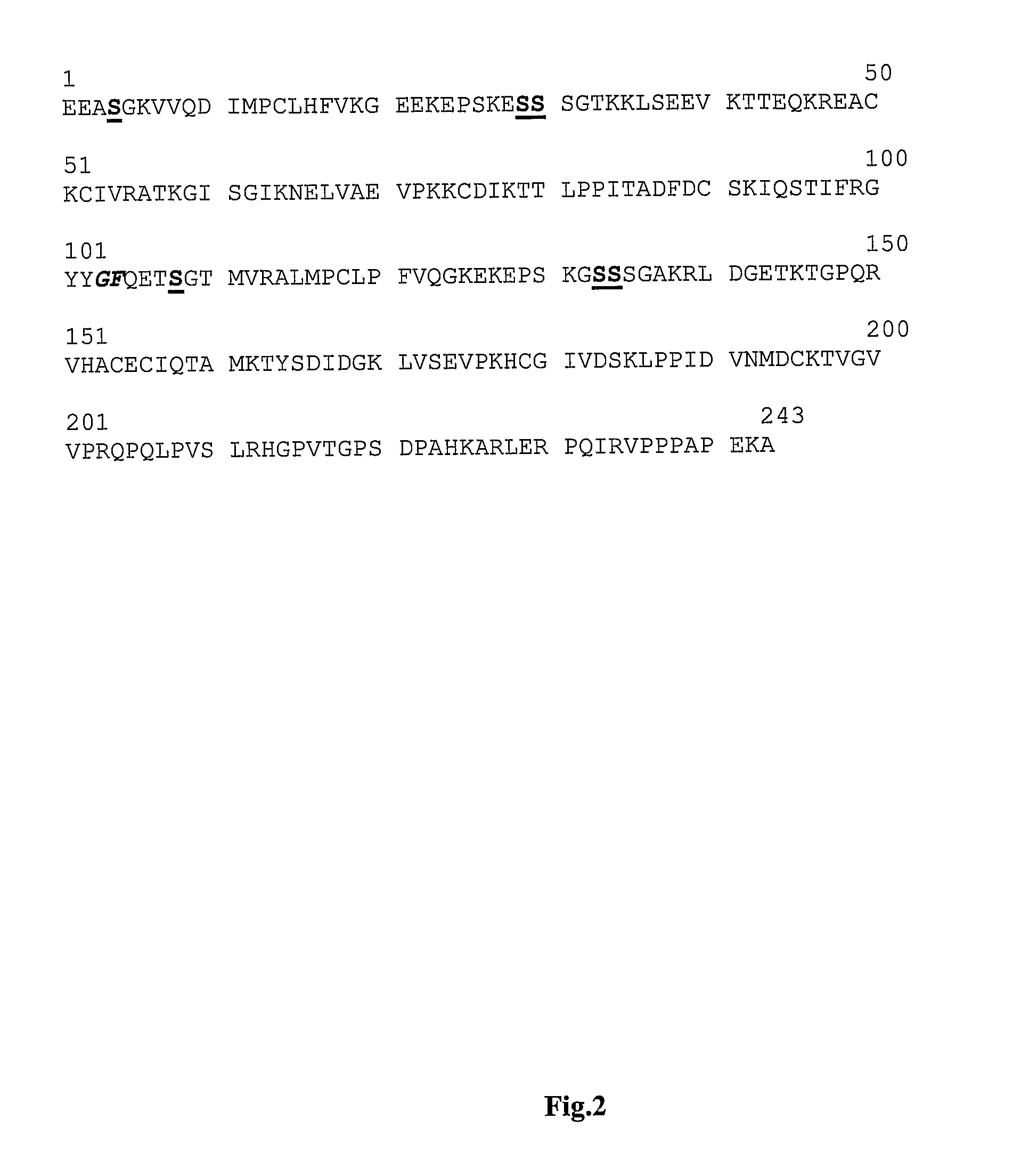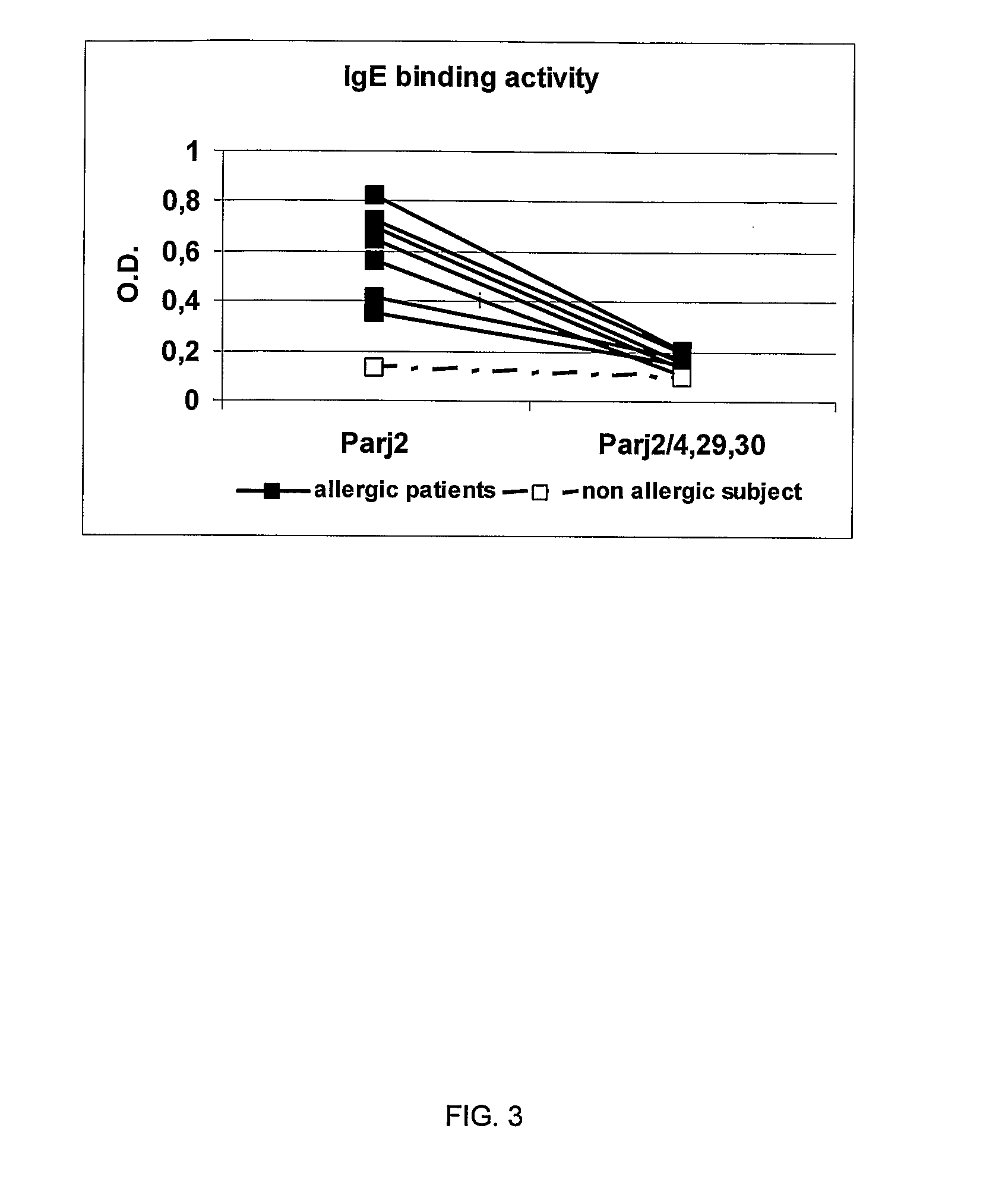Fusion proteins comprising modified allergens of the ns-ltps family, use thereof and pharmaceutical compositions comprising the same
a technology of fusion proteins and allergens, which is applied in the field of allergy prevention and treatment, can solve the problems of difficult precise standardization of allergen components, increased risk of side effects, and anaphylactic shock, and achieves the effect of saving time, material and financial resources, and simplifying all procedures
- Summary
- Abstract
- Description
- Claims
- Application Information
AI Technical Summary
Benefits of technology
Problems solved by technology
Method used
Image
Examples
example 1
Construction of a Molecule Containing Genetic Information for the Parj2 Mutated in Cys 4, 29 and 30 (Parj2 / 4,29,30 Clone)
[0054] Site-specific mutagenesis with regard to cysteine residues in positions 29 and 30 was carried out using Transformer Site-Directed Mutagenesis kit (Clontech) following the manufacturer's instructions and using the synthetic oligonucleotide Pj2 / 29-30 5′ GAG AGC AGC AGC GGC AGC 3′ (SEQ ID NO 5). The clone, capable of expressing the wild type Parj2, was used as template for the mutagenesis and the cysteine residues in positions 29 and 30 were transformed into serine (Parj2 / 29-30 clone). Process success was confirmed by recombinant clone sequencing using the Sanger method. Mutagenesis of the cysteine residue in position 4 into serine was obtained by DNA polymerase chain reaction (PCR) using the synthetic oligonucleotides Pj2 / 4 5′ GTG GGA TCC GAG GAG GCT AGC GGG AAA GTG 3′ (SEQ ID NO 6) and Pj2 reverse 5′ GGG GGA TCC ATA GTA ACC TCT GAA 3′ (SEQ ID NO 7) and usin...
example 2
Construction of a Dimer Molecule Containing Genetic Information for the Parj1 and Parj2 Mutated in Cys 4, 29 and 30
[0055] The dimer molecule consisting of the Par1 and Parj2 allergens mutated in positions Cys4, Cys29 and Cys30, respectively, was obtained by a series of DNA amplification processes.
[0056] The Parj1 clone mutated in the cysteines at positions Cys4, Cys29 and Cys30 disclosed in patent n. WO 02 / 20790 (clone 29-30) was digested with BamH1 restriction enzyme.
[0057] The fragment containing the genetic information for the Parj2 mutated in positions Cys4, 29 and 30 (Parj2 / 4,29,30 clone) was subjected to DNA amplification process using oligonucleotides Pj2 / 4 and Pj2 reverse. The fragment thus generated was purified by agarose gel, digested with BamH1 restriction enzyme and incubated with a mixture containing the enzyme DNA ligase and the Parj 1 (29-30) clone previously linearised. Recombinant clones were purified and their nucleotide sequence determined by Sanger method. Th...
example 3
Induction and Purification of Recombinant Proteins
[0058] 10 ml O / N culture were used for an inoculation in 400 ml of 2YT culture medium containing ampicillin and kanamycin to a final concentration of 100 μg / ml and 10 μg / ml, respectively. The growth occurs at 37° C. and under stirring. At +2 hour, IPTG to the final concentration of 1 mM was added to the culture and the growth proceeded for other 4 hours at 37° C. under stirring. Then, the bacterial culture was centrifuged at 5000 rpm for 15 min at 4° C. Pellet was resuspended in 5 ml / g Start buffer (10 mM Na phosphate pH7.4 and 6 M UREA) and the cells destroyed by using a sonicator. Then, recombinant proteins were definitively purified by using a His Trap column (Amersham) following the manufacturer's instructions. Eluted fractions were analysed on 16% polyacrylamide gel and fractions containing the recombinant protein were quantitatively assessed with Bradford method at the spectrophotometer after staining. Finally, proteins were d...
PUM
| Property | Measurement | Unit |
|---|---|---|
| concentration | aaaaa | aaaaa |
| concentration | aaaaa | aaaaa |
| concentration | aaaaa | aaaaa |
Abstract
Description
Claims
Application Information
 Login to View More
Login to View More - R&D
- Intellectual Property
- Life Sciences
- Materials
- Tech Scout
- Unparalleled Data Quality
- Higher Quality Content
- 60% Fewer Hallucinations
Browse by: Latest US Patents, China's latest patents, Technical Efficacy Thesaurus, Application Domain, Technology Topic, Popular Technical Reports.
© 2025 PatSnap. All rights reserved.Legal|Privacy policy|Modern Slavery Act Transparency Statement|Sitemap|About US| Contact US: help@patsnap.com



